Order from Sunstone: (800) 243-5644
The Bicentennial of the United States in 1976 gave rise to myriad projects. In New Mexico—still a borderlands possession of Spain in 1776—an unusually keen Franciscan observer, Fray Francisco Atanasio Domínguez, painted an extraordinarily detailed and often unflattering word picture of the colony. The Missions of New Mexico, 1776, impeccably translated and edited by distinguished historians Eleanor B. Adams and Fray Angélico Chávez, is a single source like no other that reveals life in raw and remote, late-eighteenth-century New Mexico.
Dispatched from Mexico City as canonical inspector of the missions of New Mexico, the meticulous Father Domínguez stepped off the measurements of the churches, counted the number of ceiling beams, and described the physical layout and contents of the missions, all to the delight of subsequent architectural and art historians. Given such detailed descriptions of the missions’ fabric in 1776, a simple question arose. What has become of these mud-and-stone-built structures in the past two hundred years?
Historian John L. Kessell’s The Missions of New Mexico Since 1776 addresses that question. “Two hundred years after Domínguez,” Kessell concludes, “the survival count is nothing to brag about. Of the thirty-two churches or chapels he recorded in 1776, twelve persist on more or less the same foundations in more or less the same form–San Miguel in Santa Fe, Santa Cruz de la Cañada, Picurís, Las Trampas, Tomé, Cochití, San Felipe, Santa Ana, Zia, Laguna, Ácoma, and Isleta.” And none of these has fallen since 1980. Most, in fact, are being lovingly cared for.
Played out differently at each location, all of Domínguez’s churches underwent the same progression. First came neglect as Spain’s American empire crumbled and Mexico tried to rule. Next Anglos peddling modernization offered tin roofs for dirt or, better still, new structures for old. By then, however, nostalgic folks had begun experiencing the charm of the outdated, and the Pueblo-Mission style of architecture was born. Simultaneously, just in time toward the end of the nineteenth century, dawned the continuing era of historic preservation. New Mexico’s surviving missions had become monuments.
The new editions of Missions and Missions Since from Sunstone Press make readily available these two complementary fixtures of New Mexico cultural studies.
Born in New Jersey and raised in California, John L. Kessell did not set out to be a professional historian. His work in the 1960s, however, at Tumacacori National Monument, site of a Spanish colonial mission, alerted him to the possibility. Returning to graduate school with new purpose, he earned his doctorate at the University of New Mexico, survived a precarious decade as historian-for-hire, and joined the UNM Department of History. His major historical editing project with colleagues Rick Hendricks, Meredith D. Dodge, and Larry D. Miller resulted in the six-volume Journals of don Diego de Vargas, New Mexico, 1691–1704. Kessell is also author of Kiva, Cross and Crown: The Pecos Indians and New Mexico, 1540–1840, Pueblos, Spaniards, and the Kingdom of New Mexico, and East Orange by Christmas, the latter also from Sunstone Press.
Softcover:
8 1/4 x 11
ISBN: 978-0-86534-870-7
302 pp.,$30.00
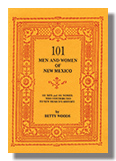 101 MEN AND WOMEN OF NEW MEXICO
101 MEN AND WOMEN OF NEW MEXICO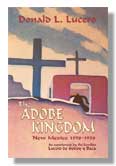 THE ADOBE KINGDOM
THE ADOBE KINGDOM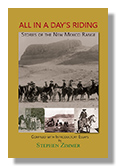 ALL IN A DAY’S RIDING
ALL IN A DAY’S RIDING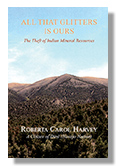 ALL THAT GLITTERS IS OURS
ALL THAT GLITTERS IS OURS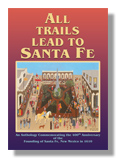 ALL TRAILS LEAD TO SANTA FE
ALL TRAILS LEAD TO SANTA FE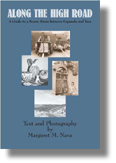 ALONG THE HIGH ROAD
ALONG THE HIGH ROAD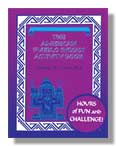 THE AMERICAN PUEBLO INDIAN ACTIVITY BOOK
THE AMERICAN PUEBLO INDIAN ACTIVITY BOOK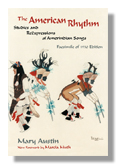 THE AMERICAN RHYTHM
THE AMERICAN RHYTHM THE ANASAZI AND THE VIKING
THE ANASAZI AND THE VIKING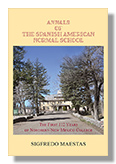 ANNALS OF THE SPANISH AMERICAN NORMAL SCHOOL
ANNALS OF THE SPANISH AMERICAN NORMAL SCHOOL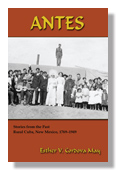 ANTES
ANTES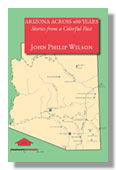 ARIZONA ACROSS 400 YEARS
ARIZONA ACROSS 400 YEARS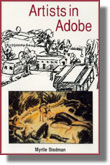 ARTISTS IN ADOBE
ARTISTS IN ADOBE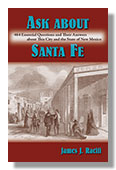 ASK ABOUT SANTA FE
ASK ABOUT SANTA FE ASSIGNMENT HOMICIDE, BEHIND THE HEADLINES
ASSIGNMENT HOMICIDE, BEHIND THE HEADLINES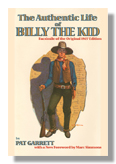 THE AUTHENTIC LIFE OF BILLY THE KID
THE AUTHENTIC LIFE OF BILLY THE KID BANDIT YEARS, A GATHERING OF WOLVES
BANDIT YEARS, A GATHERING OF WOLVES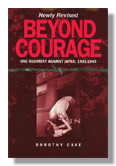 BEYOND COURAGE
BEYOND COURAGE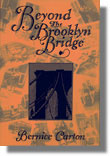 BEYOND THE BROOKLYN BRIDGE
BEYOND THE BROOKLYN BRIDGE THE BIG NEW MEXICO ACTIVITY BOOK
THE BIG NEW MEXICO ACTIVITY BOOK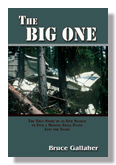 THE BIG ONE
THE BIG ONE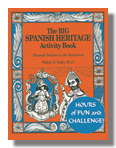 THE BIG SPANISH HERITAGE ACTIVITY BOOK
THE BIG SPANISH HERITAGE ACTIVITY BOOK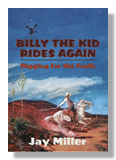 BILLY THE KID RIDES AGAIN
BILLY THE KID RIDES AGAIN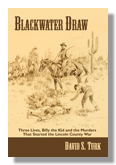 BLACKWATER DRAW
BLACKWATER DRAW BOY'S POND
BOY'S POND BREAKDOWN
BREAKDOWN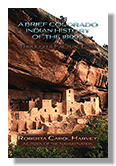 A BRIEF COLORADO INDIAN HISTORY OF THE 1800S
A BRIEF COLORADO INDIAN HISTORY OF THE 1800S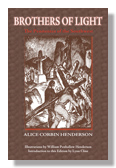 BROTHERS OF LIGHT
BROTHERS OF LIGHT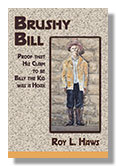 BRUSHY BILL
BRUSHY BILL BUCKSKIN AND SATIN
BUCKSKIN AND SATIN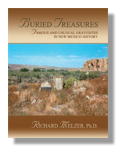 BURIED TREASURES
BURIED TREASURES BUT TIME AND CHANCE
BUT TIME AND CHANCE BYGONE DAYS OF THE OLD WEST, REVISITED
BYGONE DAYS OF THE OLD WEST, REVISITED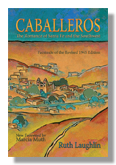 CABALLEROS
CABALLEROS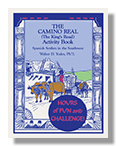 THE CAMINO REAL (THE KING'S ROAD) ACTIVITY BOOK
THE CAMINO REAL (THE KING'S ROAD) ACTIVITY BOOK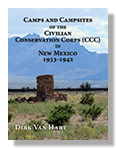 CAMPS AND CAMPSITES OF THE CIVILIAN CONSERVATION CORPS (CCC) IN NEW MEXICO 1933–1942
CAMPS AND CAMPSITES OF THE CIVILIAN CONSERVATION CORPS (CCC) IN NEW MEXICO 1933–1942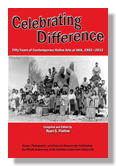 CELEBRATING DIFFERENCE
CELEBRATING DIFFERENCE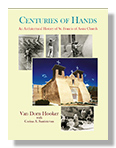 CENTURIES OF HANDS
CENTURIES OF HANDS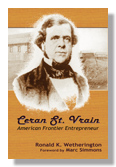 CERAN ST. VRAIN
CERAN ST. VRAIN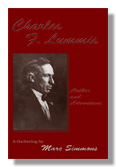 CHARLES F. LUMMIS
CHARLES F. LUMMIS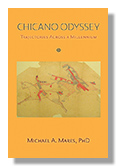 CHICANO ODYSSEY
CHICANO ODYSSEY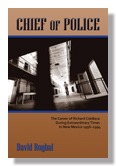 CHIEF OF POLICE
CHIEF OF POLICE CHILDREN OF DESTINY
CHILDREN OF DESTINY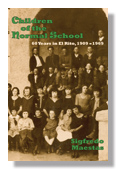 CHILDREN OF THE NORMAL SCHOOL
CHILDREN OF THE NORMAL SCHOOL CHRISTMAS IN OLD SANTA FE
CHRISTMAS IN OLD SANTA FE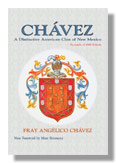 CHÁVEZ
CHÁVEZ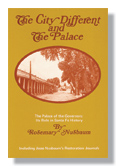 THE CITY DIFFERENT AND THE PALACE
THE CITY DIFFERENT AND THE PALACE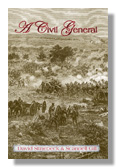 A CIVIL GENERAL
A CIVIL GENERAL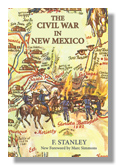 THE CIVIL WAR IN NEW MEXICO
THE CIVIL WAR IN NEW MEXICO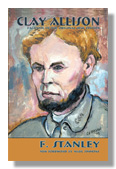 CLAY ALLISON
CLAY ALLISON CLAY ALLISON: LEGEND OF CIMARRON
CLAY ALLISON: LEGEND OF CIMARRON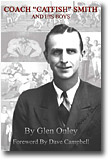 COACH “CATFISH” SMITH AND HIS BOYS
COACH “CATFISH” SMITH AND HIS BOYS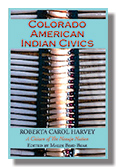 COLORADO AMERICAN INDIAN CIVICS
COLORADO AMERICAN INDIAN CIVICS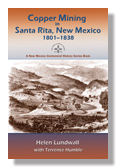 COPPER MINING IN SANTA RITA, NEW MEXICO, 1801-1838
COPPER MINING IN SANTA RITA, NEW MEXICO, 1801-1838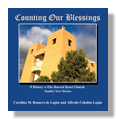 COUNTING OUR BLESSINGS
COUNTING OUR BLESSINGS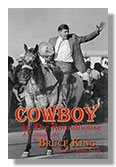 COWBOY IN THE ROUNDHOUSE
COWBOY IN THE ROUNDHOUSE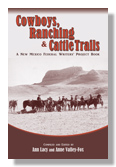 COWBOYS, RANCHING & CATTLE TRAILS
COWBOYS, RANCHING & CATTLE TRAILS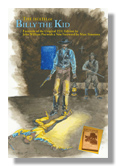 THE DEATH OF BILLY THE KID
THE DEATH OF BILLY THE KID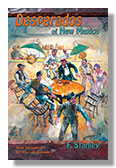 DESPERADOS OF NEW MEXICO
DESPERADOS OF NEW MEXICO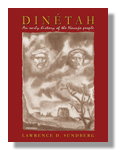 DINETAH: AN EARLY HISTORY OF THE NAVAJO
DINETAH: AN EARLY HISTORY OF THE NAVAJO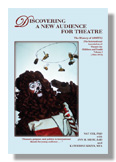 DISCOVERING A NEW AUDIENCE FOR THEATRE
DISCOVERING A NEW AUDIENCE FOR THEATRE DON JOSE
DON JOSE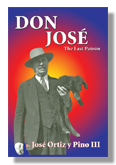 DON JOSÉ, THE LAST PATRON
DON JOSÉ, THE LAST PATRON DOUGHNUT DOLLIES
DOUGHNUT DOLLIES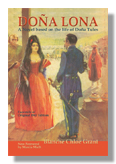 DOÑA LONA
DOÑA LONA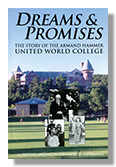 DREAMS AND PROMISES
DREAMS AND PROMISES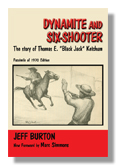 DYNAMITE AND SIX-SHOOTER
DYNAMITE AND SIX-SHOOTER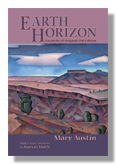 EARTH HORIZON
EARTH HORIZON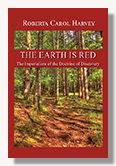 THE EARTH IS RED
THE EARTH IS RED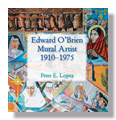 EDWARD O'BRIEN, MURAL ARTIST, 1910–1975
EDWARD O'BRIEN, MURAL ARTIST, 1910–1975 ERNIE PYLE IN THE AMERICAN SOUTHWEST
ERNIE PYLE IN THE AMERICAN SOUTHWEST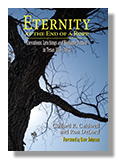 ETERNITY AT THE END OF A ROPE
ETERNITY AT THE END OF A ROPE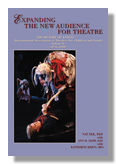 EXPANDING THE NEW AUDIENCE FOR THEATRE
EXPANDING THE NEW AUDIENCE FOR THEATRE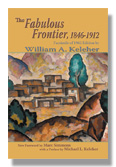 THE FABULOUS FRONTIER, 1846-1912
THE FABULOUS FRONTIER, 1846-1912 FIRE MOUNTAIN
FIRE MOUNTAIN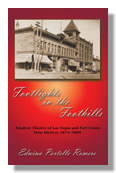 FOOTLIGHTS IN THE FOOTHILLS
FOOTLIGHTS IN THE FOOTHILLS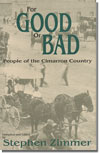 FOR GOOD OR BAD
FOR GOOD OR BAD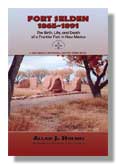 FORT SELDEN, 1865-1891
FORT SELDEN, 1865-1891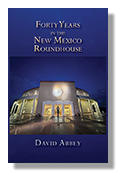 FORTY YEARS IN THE NEW MEXICO ROUNDHOUSE
FORTY YEARS IN THE NEW MEXICO ROUNDHOUSE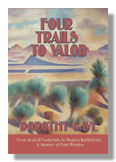 FOUR TRAILS TO VALOR
FOUR TRAILS TO VALOR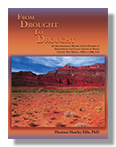 FROM DROUGHT TO DROUGHT
FROM DROUGHT TO DROUGHT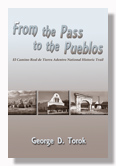 FROM THE PASS TO THE PUEBLOS
FROM THE PASS TO THE PUEBLOS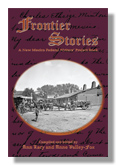 FRONTIER STORIES
FRONTIER STORIES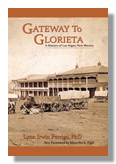 GATEWAY TO GLORIETA
GATEWAY TO GLORIETA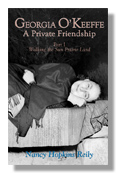 GEORGIA O'KEEFFE, A PRIVATE FRIENDSHIP, PART I
GEORGIA O'KEEFFE, A PRIVATE FRIENDSHIP, PART I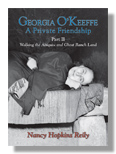 GEORGIA O'KEEFFE, A PRIVATE FRIENDSHIP, PART II
GEORGIA O'KEEFFE, A PRIVATE FRIENDSHIP, PART II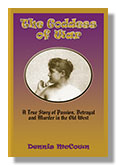 THE GODDESS OF WAR
THE GODDESS OF WAR GOLDEN ARMS, AKA TEST PILOTS
GOLDEN ARMS, AKA TEST PILOTS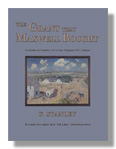 THE GRANT THAT MAXWELL BOUGHT
THE GRANT THAT MAXWELL BOUGHT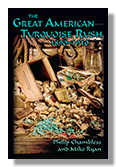 THE GREAT AMERICAN TURQUOISE RUSH: 1890–1910
THE GREAT AMERICAN TURQUOISE RUSH: 1890–1910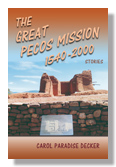 THE GREAT PECOS MISSION, 1540-2000
THE GREAT PECOS MISSION, 1540-2000 GROWING UP TO COWBOY
GROWING UP TO COWBOY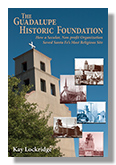 THE GUADALUPE HISTORIC FOUNDATION
THE GUADALUPE HISTORIC FOUNDATION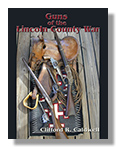 GUNS OF THE LINCOLN COUNTY WAR
GUNS OF THE LINCOLN COUNTY WAR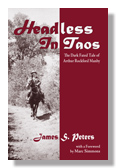 HEADLESS IN TAOS
HEADLESS IN TAOS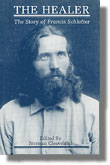 THE HEALER
THE HEALER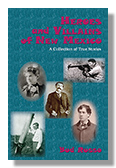 HEROES AND VILLAINS OF NEW MEXICO
HEROES AND VILLAINS OF NEW MEXICO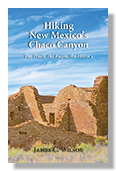 HIKING NEW MEXICO’S CHACO CANYON
HIKING NEW MEXICO’S CHACO CANYON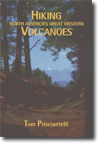 HIKING NORTH AMERICA'S GREAT WESTERN VOLCANOES
HIKING NORTH AMERICA'S GREAT WESTERN VOLCANOES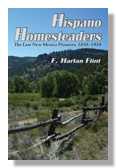 HISPANO HOMESTEADERS
HISPANO HOMESTEADERS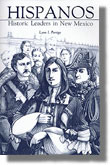 HISPANOS
HISPANOS HISTORIC CATHOLIC CHURCHES ALONG THE RIO GRANDE IN NEW MEXICO
HISTORIC CATHOLIC CHURCHES ALONG THE RIO GRANDE IN NEW MEXICO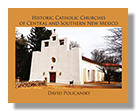 HISTORIC CATHOLIC CHURCHES OF CENTRAL AND SOUTHERN NEW MEXICO
HISTORIC CATHOLIC CHURCHES OF CENTRAL AND SOUTHERN NEW MEXICO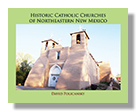 HISTORIC CATHOLIC CHURCHES OF NORTHEASTERN NEW MEXICO
HISTORIC CATHOLIC CHURCHES OF NORTHEASTERN NEW MEXICO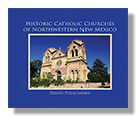 HISTORIC CATHOLIC CHURCHES OF NORTHWESTERN NEW MEXICO
HISTORIC CATHOLIC CHURCHES OF NORTHWESTERN NEW MEXICO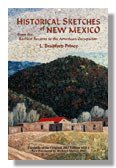 HISTORICAL SKETCHES OF NEW MEXICO
HISTORICAL SKETCHES OF NEW MEXICO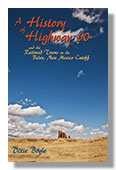 A HISTORY OF HIGHWAY 60 AND THE RAILROAD TOWNS ON THE BELEN, NEW MEXICO CUTOFF
A HISTORY OF HIGHWAY 60 AND THE RAILROAD TOWNS ON THE BELEN, NEW MEXICO CUTOFF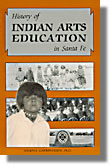 HISTORY OF INDIAN ARTS EDUCATION IN SANTA FE, 1890-1962
HISTORY OF INDIAN ARTS EDUCATION IN SANTA FE, 1890-1962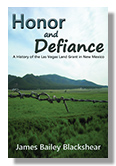 HONOR AND DEFIANCE
HONOR AND DEFIANCE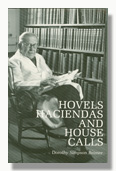 HOVELS, HACIENDAS AND HOUSE CALLS
HOVELS, HACIENDAS AND HOUSE CALLS I WANT TO PLAY
I WANT TO PLAY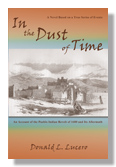 IN THE DUST OF TIME
IN THE DUST OF TIME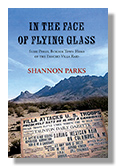 IN THE FACE OF FLYING GLASS
IN THE FACE OF FLYING GLASS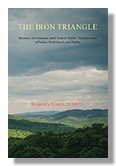 THE IRON TRIANGLE
THE IRON TRIANGLE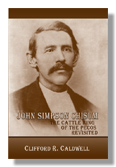 JOHN SIMPSON CHISUM
JOHN SIMPSON CHISUM JOSEPH IMHOF
JOSEPH IMHOF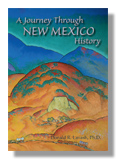 A JOURNEY THROUGH NEW MEXICO HISTORY
A JOURNEY THROUGH NEW MEXICO HISTORY JUAN DE ONATE'S COLONY IN THE WILDERNESS
JUAN DE ONATE'S COLONY IN THE WILDERNESS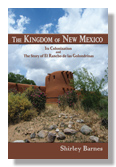 THE KINGDOM OF NEW MEXICO
THE KINGDOM OF NEW MEXICO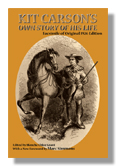 KIT CARSON'S OWN STORY OF HIS LIFE
KIT CARSON'S OWN STORY OF HIS LIFE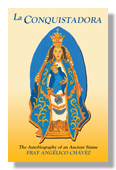 LA CONQUISTADORA / Chavez
LA CONQUISTADORA / Chavez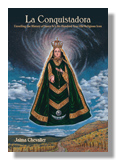 LA CONQUISTADORA / Chevalier
LA CONQUISTADORA / Chevalier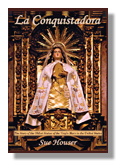 LA CONQUISTADORA / Houser
LA CONQUISTADORA / Houser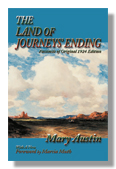 THE LAND OF JOURNEYS' ENDING
THE LAND OF JOURNEYS' ENDING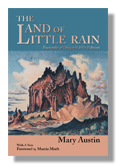 THE LAND OF LITTLE RAIN
THE LAND OF LITTLE RAIN LANDS OF THE UNEXPECTED
LANDS OF THE UNEXPECTED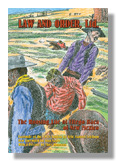 LAW AND ORDER, LTD.
LAW AND ORDER, LTD.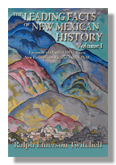 THE LEADING FACTS OF NEW MEXICAN HISTORY, VOL I
THE LEADING FACTS OF NEW MEXICAN HISTORY, VOL I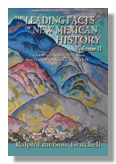 THE LEADING FACTS OF NEW MEXICAN HISTORY, VOL. II
THE LEADING FACTS OF NEW MEXICAN HISTORY, VOL. II THE LEGEND HUNTER
THE LEGEND HUNTER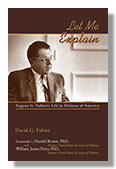 LET ME EXPLAIN
LET ME EXPLAIN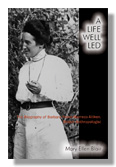 A LIFE WELL LED
A LIFE WELL LED LIVING LEGENDS OF THE SANTA FE COUNTRY
LIVING LEGENDS OF THE SANTA FE COUNTRY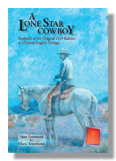 A LONE STAR COWBOY
A LONE STAR COWBOY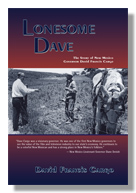 LONESOME DAVE
LONESOME DAVE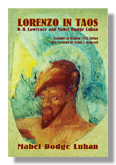 LORENZO IN TAOS
LORENZO IN TAOS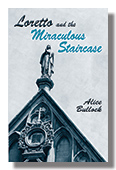 LORETTO AND THE MIRACULOUS STAIRCASE
LORETTO AND THE MIRACULOUS STAIRCASE LOS COMANCHES
LOS COMANCHES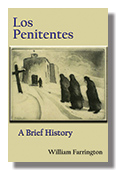 LOS PENITENTES
LOS PENITENTES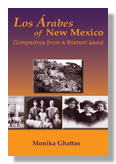 LOS ÁRABES OF NEW MEXICO
LOS ÁRABES OF NEW MEXICO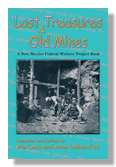 LOST TREASURES & OLD MINES
LOST TREASURES & OLD MINES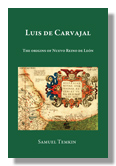 LUIS DE CARVAJAL
LUIS DE CARVAJAL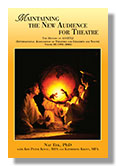 MAINTAINING THE NEW AUDIENCE FOR THEATRE
MAINTAINING THE NEW AUDIENCE FOR THEATRE MARIA MAKING POTTERY
MARIA MAKING POTTERY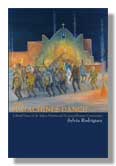 THE MATACHINES DANCE
THE MATACHINES DANCE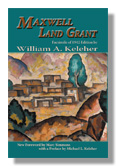 MAXWELL LAND GRANT
MAXWELL LAND GRANT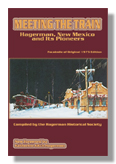 MEETING THE TRAIN
MEETING THE TRAIN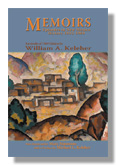 MEMOIRS
MEMOIRS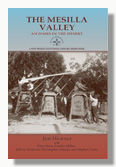 THE MESILLA VALLEY
THE MESILLA VALLEY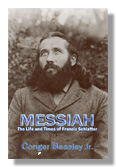 MESSIAH
MESSIAH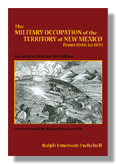 THE MILITARY OCCUPATION OF THE TERRITORY OF NEW MEXICO, 1846-1851
THE MILITARY OCCUPATION OF THE TERRITORY OF NEW MEXICO, 1846-1851 MISS EMILY
MISS EMILY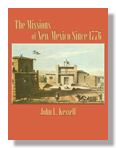 THE MISSIONS OF NEW MEXICO Since 1776
THE MISSIONS OF NEW MEXICO Since 1776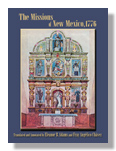 THE MISSIONS OF NEW MEXICO, 1776
THE MISSIONS OF NEW MEXICO, 1776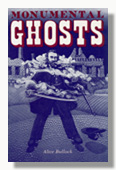 MONUMENTAL GHOSTS
MONUMENTAL GHOSTS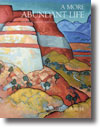 A MORE ABUNDANT LIFE
A MORE ABUNDANT LIFE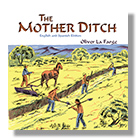 THE MOTHER DITCH
THE MOTHER DITCH MOUNTAIN VILLAGES
MOUNTAIN VILLAGES MY CITY DIFFERENT
MY CITY DIFFERENT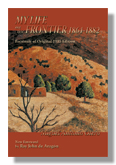 MY LIFE ON THE FRONTIER, 1864-1882
MY LIFE ON THE FRONTIER, 1864-1882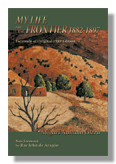 MY LIFE ON THE FRONTIER, 1882-1897
MY LIFE ON THE FRONTIER, 1882-1897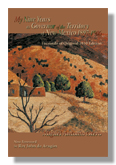 MY NINE YEARS AS GOVERNOR OF THE TERRITORY OF NEW MEXICO, 1897-1906
MY NINE YEARS AS GOVERNOR OF THE TERRITORY OF NEW MEXICO, 1897-1906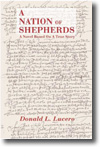 A NATION OF SHEPHERDS
A NATION OF SHEPHERDS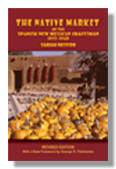 THE NATIVE MARKET OF THE SPANISH NEW MEXICAN CRAFTSMAN, 1933-1940
THE NATIVE MARKET OF THE SPANISH NEW MEXICAN CRAFTSMAN, 1933-1940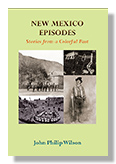 NEW MEXICO EPISODES
NEW MEXICO EPISODES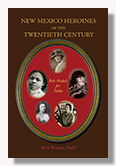 NEW MEXICO HEROINES OF THE TWENTIETH CENTURY, ROLE MODELS FOR TODAY
NEW MEXICO HEROINES OF THE TWENTIETH CENTURY, ROLE MODELS FOR TODAY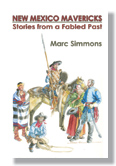 NEW MEXICO MAVERICKS
NEW MEXICO MAVERICKS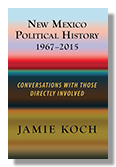 NEW MEXICO POLITICAL HISTORY, 1967–2015
NEW MEXICO POLITICAL HISTORY, 1967–2015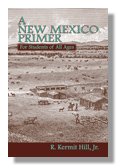 A NEW MEXICO PRIMER FOR STUDENTS OF ALL AGES
A NEW MEXICO PRIMER FOR STUDENTS OF ALL AGES NEW MEXICO STORIES
NEW MEXICO STORIES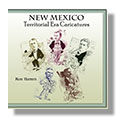 NEW MEXICO TERRITORIAL ERA CARICATURES
NEW MEXICO TERRITORIAL ERA CARICATURES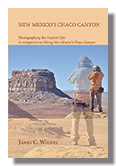 NEW MEXICO'S CHACO CANYON, PHOTOGRAPHING THE ANCIENT CITY
NEW MEXICO'S CHACO CANYON, PHOTOGRAPHING THE ANCIENT CITY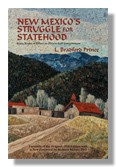 NEW MEXICO'S STRUGGLE FOR STATEHOOD
NEW MEXICO'S STRUGGLE FOR STATEHOOD NINA OTERO-WARREN OF SANTA FE
NINA OTERO-WARREN OF SANTA FE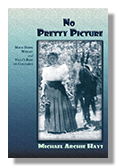 NO PRETTY PICTURE
NO PRETTY PICTURE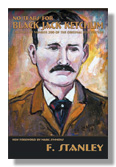 NO TEARS FOR BLACK JACK KETCHUM
NO TEARS FOR BLACK JACK KETCHUM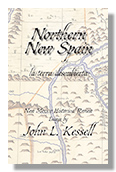 NORTHERN NEW SPAIN
NORTHERN NEW SPAIN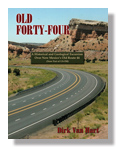 OLD FORTY-FOUR
OLD FORTY-FOUR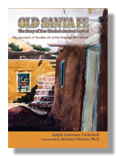 OLD SANTA FE
OLD SANTA FE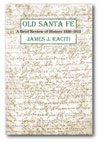 OLD SANTA FE
OLD SANTA FE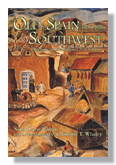 OLD SPAIN IN OUR SOUTHWEST
OLD SPAIN IN OUR SOUTHWEST OLD SPANISH TRAIL NORTH BRANCH AND ITS TRAVELERS
OLD SPANISH TRAIL NORTH BRANCH AND ITS TRAVELERS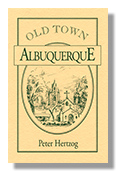 OLD TOWN ALBUQUERQUE
OLD TOWN ALBUQUERQUE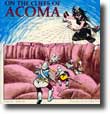 ON THE CLIFFS OF ACOMA
ON THE CLIFFS OF ACOMA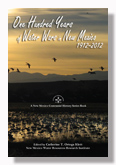 ONE HUNDRED YEARS OF WATER WARS IN NEW MEXICO, 1912-2012
ONE HUNDRED YEARS OF WATER WARS IN NEW MEXICO, 1912-2012 THE OTHER STATE, NEW MEXICO USA
THE OTHER STATE, NEW MEXICO USA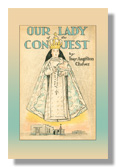 OUR LADY OF THE CONQUEST
OUR LADY OF THE CONQUEST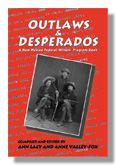 OUTLAWS & DESPERADOS
OUTLAWS & DESPERADOS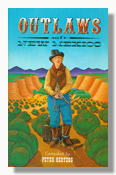 OUTLAWS OF NEW MEXICO
OUTLAWS OF NEW MEXICO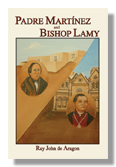 PADRE MARTINEZ AND BISHOP LAMY
PADRE MARTINEZ AND BISHOP LAMY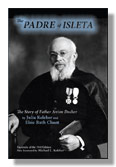 THE PADRE OF ISLETA
THE PADRE OF ISLETA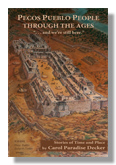 PECOS PUEBLO PEOPLE THROUGH THE AGES
PECOS PUEBLO PEOPLE THROUGH THE AGES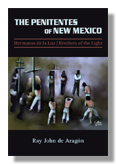 THE PENITENTES OF NEW MEXICO
THE PENITENTES OF NEW MEXICO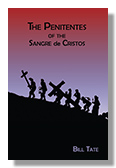 THE PENITENTES OF THE SANGRE DE CRISTOS
THE PENITENTES OF THE SANGRE DE CRISTOS A PLACE OF HER OWN
A PLACE OF HER OWN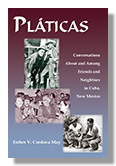 PLÁTICAS
PLÁTICAS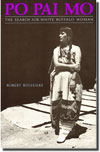 PO PAI MO
PO PAI MO PORTRAITS OF THE IRON HORSE
PORTRAITS OF THE IRON HORSE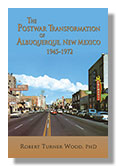 THE POSTWAR TRANSFORMATION OF ALBUQUERQUE, NEW MEXICO, 1945–1972
THE POSTWAR TRANSFORMATION OF ALBUQUERQUE, NEW MEXICO, 1945–1972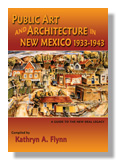 PUBLIC ART AND ARCHITECTURE IN NEW MEXICO, 1933-1943
PUBLIC ART AND ARCHITECTURE IN NEW MEXICO, 1933-1943 PUBLIC TELEVISION: AMERICA'S FIRST STATION
PUBLIC TELEVISION: AMERICA'S FIRST STATION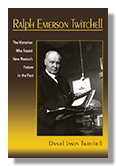 RALPH EMERSON TWITCHELL
RALPH EMERSON TWITCHELL RE-RIDING HISTORY
RE-RIDING HISTORY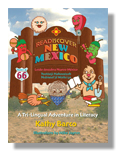 READiscover NEW MEXICO
READiscover NEW MEXICO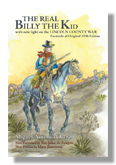 THE REAL BILLY THE KID
THE REAL BILLY THE KID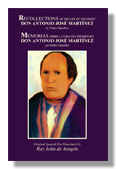 RECOLLECTIONS OF THE LIFE OF THE PRIEST DON ANTONIO JOSE MARTINEZ
RECOLLECTIONS OF THE LIFE OF THE PRIEST DON ANTONIO JOSE MARTINEZ RECONSTRUCTING MABEL
RECONSTRUCTING MABEL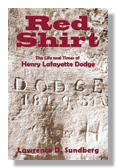 RED SHIRT
RED SHIRT REFLECTIONS ON FAME AND SOME MEN
REFLECTIONS ON FAME AND SOME MEN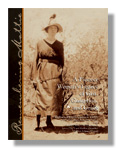 REMEMBERING MATTIE
REMEMBERING MATTIE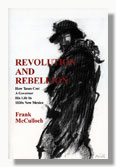 REVOLUTION AND REBELLION
REVOLUTION AND REBELLION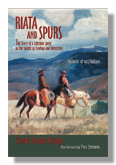 RIATA AND SPURS
RIATA AND SPURS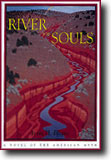 RIVER OF SOULS
RIVER OF SOULS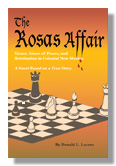 THE ROSAS AFFAIR
THE ROSAS AFFAIR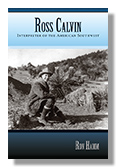 ROSS CALVIN
ROSS CALVIN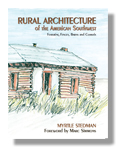 RURAL ARCHITECTURE
RURAL ARCHITECTURE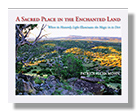 A SACRED PLACE IN THE ENCHANTED LAND
A SACRED PLACE IN THE ENCHANTED LAND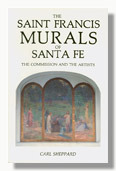 THE SAINT FRANCIS MURALS OF SANTA FE
THE SAINT FRANCIS MURALS OF SANTA FE SAM MAVERICK’S TRAIL
SAM MAVERICK’S TRAIL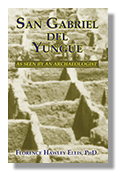 SAN GABRIEL DEL YUNGUE
SAN GABRIEL DEL YUNGUE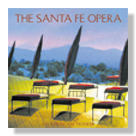 THE SANTA FE OPERA
THE SANTA FE OPERA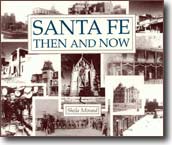 SANTA FE THEN AND NOW
SANTA FE THEN AND NOW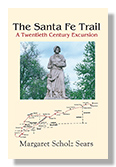 THE SANTA FE TRAIL
THE SANTA FE TRAIL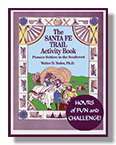 THE SANTA FE TRAIL ACTIVITY BOOK
THE SANTA FE TRAIL ACTIVITY BOOK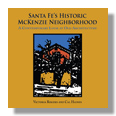 SANTA FE'S HISTORIC McKENZIE NEIGHBORHOOD
SANTA FE'S HISTORIC McKENZIE NEIGHBORHOOD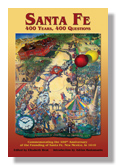 SANTA FE, 400 YEARS, 400 QUESTIONS
SANTA FE, 400 YEARS, 400 QUESTIONS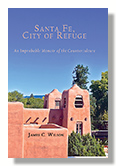 SANTA FE, CITY OF REFUGE
SANTA FE, CITY OF REFUGE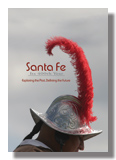 SANTA FE, ITS 400TH YEAR
SANTA FE, ITS 400TH YEAR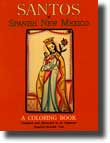 SANTOS OF SPANISH NEW MEXICO
SANTOS OF SPANISH NEW MEXICO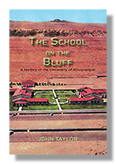 THE SCHOOL ON THE BLUFF
THE SCHOOL ON THE BLUFF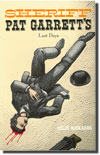 SHERIFF PAT GARRETT'S LAST DAYS
SHERIFF PAT GARRETT'S LAST DAYS SHERIFF WILLIAM BRADY
SHERIFF WILLIAM BRADY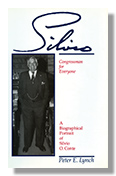 SILVIO, CONGRESSMAN FOR EVERYONE
SILVIO, CONGRESSMAN FOR EVERYONE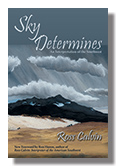 SKY DETERMINES
SKY DETERMINES SMOKEY BEAR AND THE GREAT WILDERNESS
SMOKEY BEAR AND THE GREAT WILDERNESS SONGS OF THE TEWA
SONGS OF THE TEWA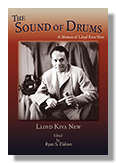 THE SOUND OF DRUMS
THE SOUND OF DRUMS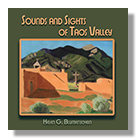 SOUNDS AND SIGHTS OF TAOS VALLEY
SOUNDS AND SIGHTS OF TAOS VALLEY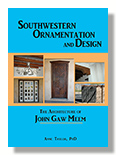 SOUTHWESTERN ORNAMENTATION AND DESIGN
SOUTHWESTERN ORNAMENTATION AND DESIGN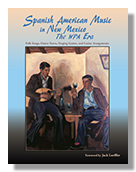 SPANISH AMERICAN MUSIC IN NEW MEXICO, THE WPA ERA
SPANISH AMERICAN MUSIC IN NEW MEXICO, THE WPA ERA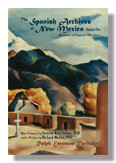 THE SPANISH ARCHIVES OF NEW MEXICO, VOLUME ONE
THE SPANISH ARCHIVES OF NEW MEXICO, VOLUME ONE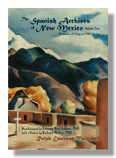 THE SPANISH ARCHIVES OF NEW MEXICO, VOLUME TWO
THE SPANISH ARCHIVES OF NEW MEXICO, VOLUME TWO SPANISH COLONIAL FURNITURE
SPANISH COLONIAL FURNITURE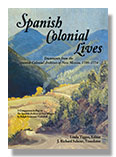 SPANISH COLONIAL LIVES
SPANISH COLONIAL LIVES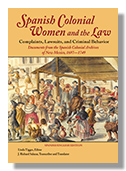 SPANISH COLONIAL WOMEN AND THE LAW: COMPLAINTS, LAWSUITS, AND CRIMINAL BEHAVIOR
SPANISH COLONIAL WOMEN AND THE LAW: COMPLAINTS, LAWSUITS, AND CRIMINAL BEHAVIOR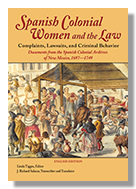 SPANISH COLONIAL WOMEN AND THE LAW: COMPLAINTS, LAWSUITS, AND CRIMINAL BEHAVIOR (ENGLISH EDITION)
SPANISH COLONIAL WOMEN AND THE LAW: COMPLAINTS, LAWSUITS, AND CRIMINAL BEHAVIOR (ENGLISH EDITION) SPIRIT OF THE AMERICAN SOUTHWEST
SPIRIT OF THE AMERICAN SOUTHWEST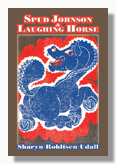 SPUD JOHNSON & LAUGHING HORSE
SPUD JOHNSON & LAUGHING HORSE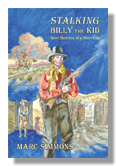 STALKING BILLY THE KID
STALKING BILLY THE KID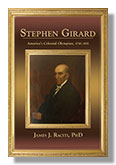 STEPHEN GIRARD
STEPHEN GIRARD A STONE FOR EVERY JOURNEY
A STONE FOR EVERY JOURNEY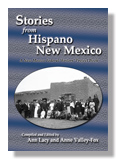 STORIES FROM HISPANO NEW MEXICO
STORIES FROM HISPANO NEW MEXICO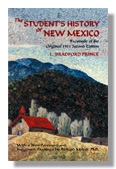 THE STUDENT'S HISTORY OF NEW MEXICO
THE STUDENT'S HISTORY OF NEW MEXICO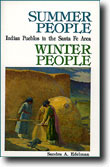 SUMMER PEOPLE / WINTER PEOPLE
SUMMER PEOPLE / WINTER PEOPLE TALES FROM THE RANGE
TALES FROM THE RANGE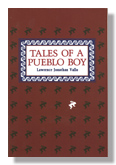 TALES OF A PUEBLO BOY
TALES OF A PUEBLO BOY TALESPINS
TALESPINS TALKING AMERICAN HISTORY
TALKING AMERICAN HISTORY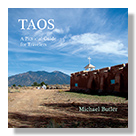 TAOS
TAOS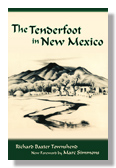 THE TENDERFOOT IN NEW MEXICO
THE TENDERFOOT IN NEW MEXICO THREE AGAINST ONE
THREE AGAINST ONE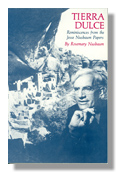 TIERRA DULCE
TIERRA DULCE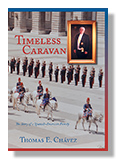 TIMELESS CARAVAN
TIMELESS CARAVAN TO DIE IN DINETAH
TO DIE IN DINETAH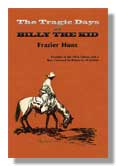 THE TRAGIC DAYS OF BILLY THE KID
THE TRAGIC DAYS OF BILLY THE KID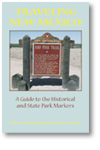 TRAVELING NEW MEXICO
TRAVELING NEW MEXICO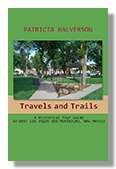 TRAVELS AND TRAILS
TRAVELS AND TRAILS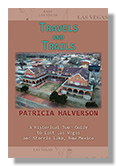 TRAVELS AND TRAILS
TRAVELS AND TRAILS TUBAR
TUBAR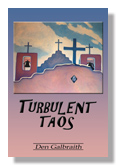 TURBULENT TAOS
TURBULENT TAOS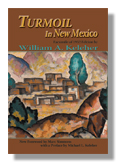 TURMOIL IN NEW MEXICO, 1846-1868
TURMOIL IN NEW MEXICO, 1846-1868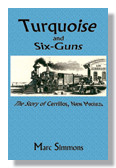 TURQUOISE & SIX GUNS
TURQUOISE & SIX GUNS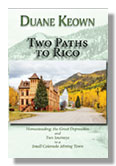 TWO PATHS TO RICO
TWO PATHS TO RICO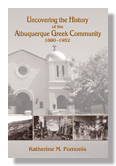 UNCOVERING THE HISTORY OF THE ALBUQUERQUE GREEK COMMUNITY, 1880–1952
UNCOVERING THE HISTORY OF THE ALBUQUERQUE GREEK COMMUNITY, 1880–1952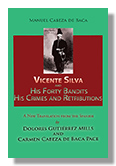 VICENTE SILVA AND HIS FORTY BANDITS, HIS CRIMES AND RETRIBUTIONS
VICENTE SILVA AND HIS FORTY BANDITS, HIS CRIMES AND RETRIBUTIONS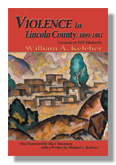 VIOLENCE IN LINCOLN COUNTY, 1869-1881
VIOLENCE IN LINCOLN COUNTY, 1869-1881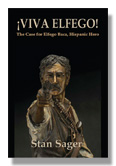 VIVA ELFEGO
VIVA ELFEGO VOICES IN OUR SOULS
VOICES IN OUR SOULS WARRIOR SOCIETIES
WARRIOR SOCIETIES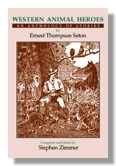 WESTERN ANIMAL HEROES
WESTERN ANIMAL HEROES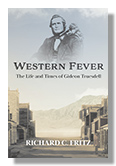 WESTERN FEVER
WESTERN FEVER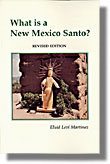 WHAT IS A NEW MEXICO SANTO?
WHAT IS A NEW MEXICO SANTO?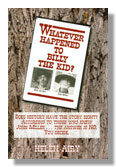 WHATEVER HAPPENED TO BILLY THE KID
WHATEVER HAPPENED TO BILLY THE KID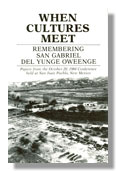 WHEN CULTURES MEET
WHEN CULTURES MEET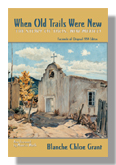 WHEN OLD TRAILS WERE NEW
WHEN OLD TRAILS WERE NEW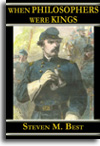 WHEN PHILOSOPHERS WERE KINGS
WHEN PHILOSOPHERS WERE KINGS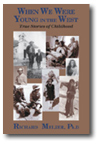 WHEN WE WERE YOUNG IN THE WEST
WHEN WE WERE YOUNG IN THE WEST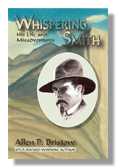 WHISPERING SMITH
WHISPERING SMITH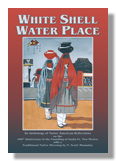 WHITE SHELL WATER PLACE
WHITE SHELL WATER PLACE WHY WE THE PEOPLE MUST VOTE
WHY WE THE PEOPLE MUST VOTE WILD HORSES IN MY BLOOD
WILD HORSES IN MY BLOOD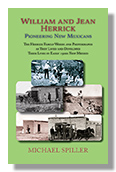 WILLIAM AND JEAN HERRICK
WILLIAM AND JEAN HERRICK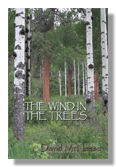 THE WIND IN THE TREES
THE WIND IN THE TREES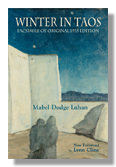 WINTER IN TAOS
WINTER IN TAOS WISE HOMBRE QUIZZES
WISE HOMBRE QUIZZES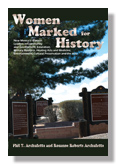 WOMEN MARKED FOR HISTORY
WOMEN MARKED FOR HISTORY YESTERDAY IN SANTA FE
YESTERDAY IN SANTA FE